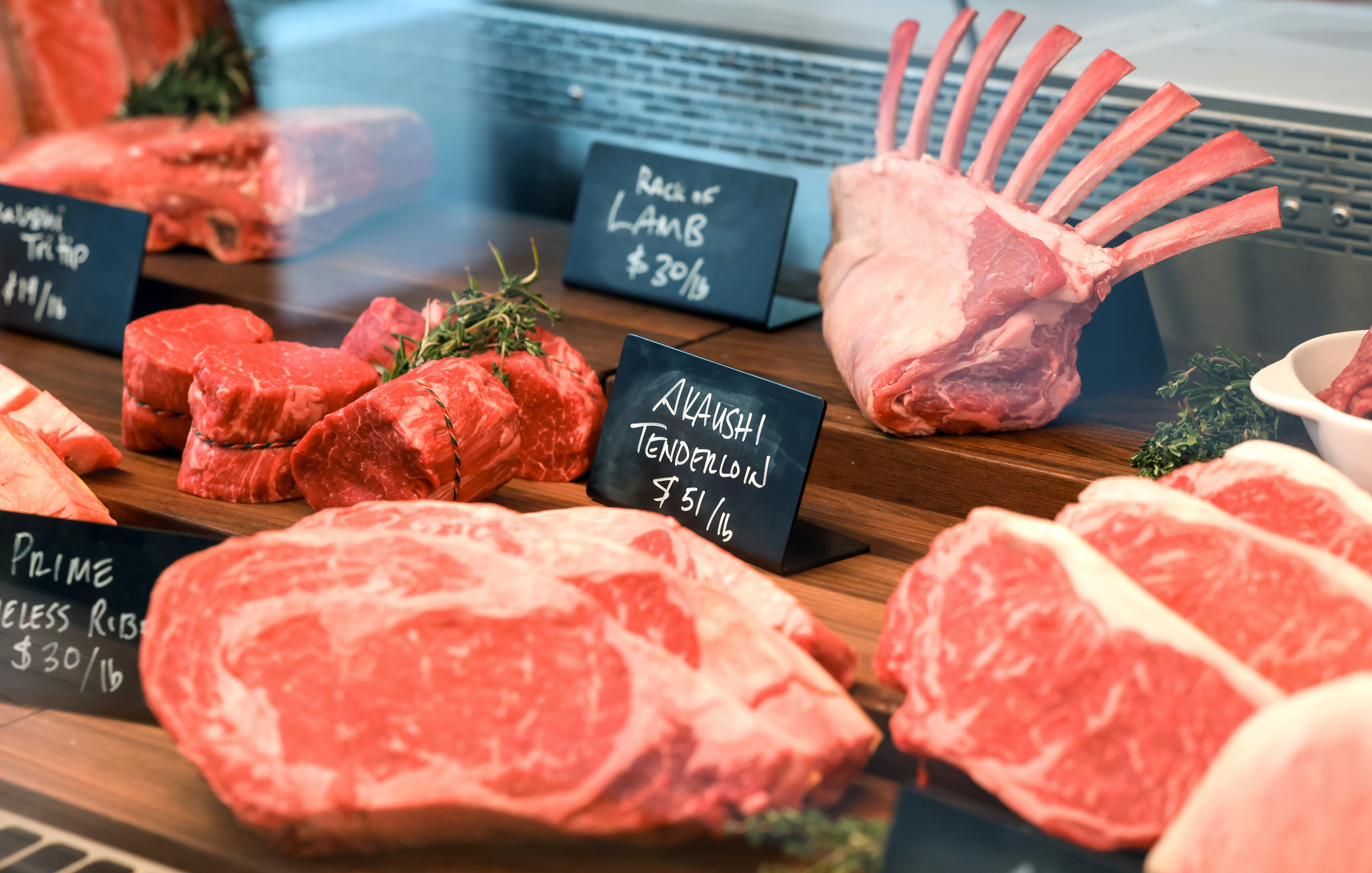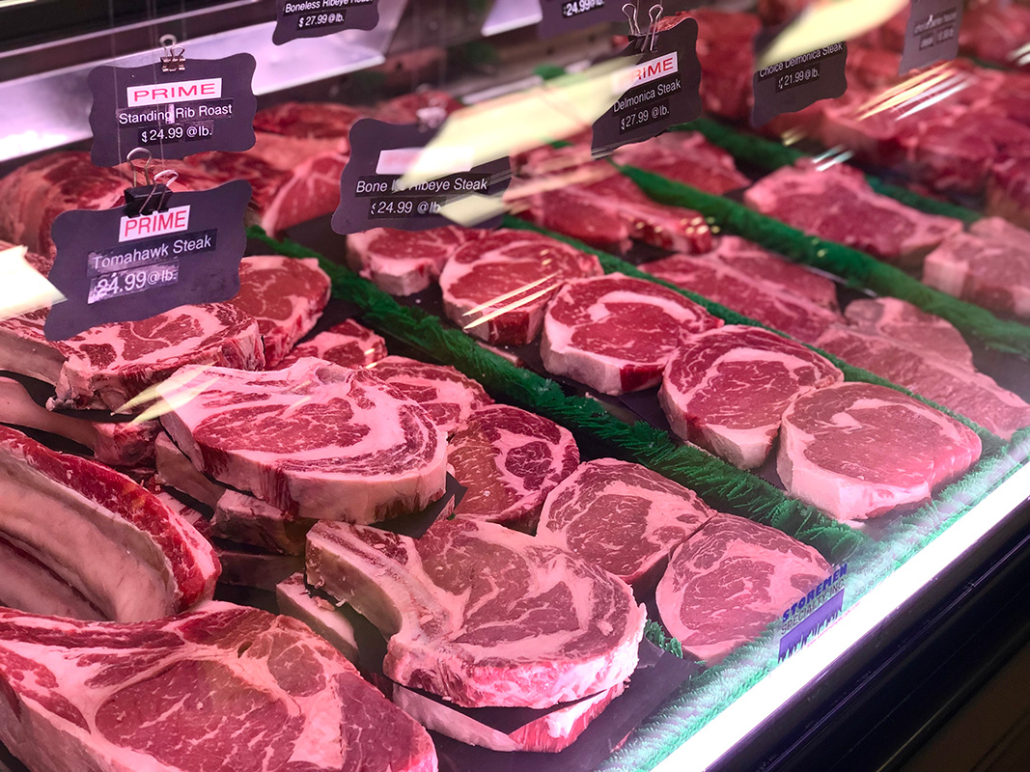See Bagley Farms Meat Market Edwardsville IL for Farm-Fresh Meat and Specialty Cuts
See Bagley Farms Meat Market Edwardsville IL for Farm-Fresh Meat and Specialty Cuts
Blog Article
Uncover the Art of the Butcher's Cut in a Modern Meat Market
In the ever-evolving landscape of contemporary meat markets, the butcher's cut has transcended its conventional roots, merging olden workmanship with contemporary techniques. Today's butchers are not simply processors of meat; they are educated artisans that emphasize sustainability and moral sourcing. Their experience in selecting and preparing cuts customized to specific culinary demands uses an unmatched dining experience. What absolutely sets the contemporary butcher apart is their capacity to forge a much deeper link between customers and the origins of their meat. Just how do these masters balance practice with development, and what effects does this have for the future of meat intake?
Advancement of Butchery Strategies
The evolution of butchery strategies mirrors a rich tapestry of technology and adjustment driven by innovations in technology, changes in consumer demand, and a much deeper understanding of meat science. Historically, butchery was a craft passed down via generations, with techniques refined over centuries to maximize yield and taste. The commercial change ushered in mechanization, changing standard techniques and making it possible for massive handling.
The mid-20th century saw butchery strategies additionally refined by scientific understandings right into muscle mass biology and meat aging, boosting both inflammation and taste. Developments like vacuum packaging and refrigeration prolonged item shelf-life, allowing butchers to branch out offerings and enhance quality assurance. This period also marked the rise of specialized tools, such as band saws and meat slicers, which enhanced accuracy and efficiency in meat handling.

The 21st century has actually presented digital technology into the butchery world. Computerized systems now aid in tracking animal provenance and optimizing cuts to fulfill details client preferences. Additionally, a rebirth in artisanal butchery has actually emerged, mixing standard skills with contemporary understanding to deal with consumers looking for honest and sustainable meat alternatives. This development underscores a vibrant interaction between custom and technology, meeting contemporary demands while preserving the craft's heritage.
Comprehending Meat Cuts
Recognizing the ins and outs of meat cuts is important for both butchers and customers seeking quality and value. Each cut originates from a different part of the pet, passing on special flavors, textures, and cooking methods - bagley farms meat market edwardsville il. Mastery of these distinctions not only boosts cooking experiences but additionally maximizes the energy of each carcass. For butchers, precise cuts reflect ability and respect for the craft, ensuring minimal waste and optimal return.

Recognizing muscle mass composition is essential; muscle mass utilized more regularly by the animal often tend to be tougher and are best fit for slow-moving cooking approaches, while less-used muscles, like those found in the loin, are a lot more tender and ideal for barbecuing or roasting. Knowledge with these differences encourages customers to make enlightened options, enhancing their culinary ventures.
Selecting Top Quality Meat
Picking the best meat entails even more than simply selecting a visually attractive piece from the display. The art of selecting quality meat calls for a critical eye and understanding of details features that represent freshness and excellence.
Secondly, consider the marbling, which describes the white flecks of fat within the muscle mass. Appropriate marbling is a vital indicator of inflammation and flavor, as it melts throughout cooking, improving the meat's juiciness. Bear in mind, greater marbling typically associates with premium quality cuts, such as USDA Prime.
Appearance is one more crucial factor; meat needs to really feel solid to the touch, not slimy or overly soft. Additionally, bear in mind the fragrance. Fresh meat needs to have a tidy, neutral odor, devoid of any sour or off-putting odors.
Matching Cuts With Cooking Approaches

On the other hand, tougher cuts like brisket and chuck roast are abundant in collagen, which breaks down into jelly when cooked gradually. These cuts are suitable for braising or slow-moving roasting, allowing the meat to soften gradually and develop deep, complicated tastes. Similarly, cuts such as brief ribs and pork shoulder prosper with slow-cooking approaches, where extended cooking times change their durable textures right into delicious recipes.
Lamb shanks and oxtail, which call for long term cooking to soften, are excellent candidates for stewing or sluggish simmering. These methods coax look at these guys out abundant, hearty tastes while maintaining moisture. By recognizing the one-of-a-kind attributes of each cut, chefs and home chefs alike can elevate their culinary creations, making sure each recipe is both pleasing and remarkable.
The Butcher's Role Today
Navigating the evolving landscape of the contemporary meat market, the butcher's function today extends past plain preparation of cuts. Contemporary butchers are cooking artisans, educators, and advocates for sustainable techniques. They connect the space in between the farm and the fork by making certain ethical sourcing, comprehending pet husbandry, and prioritizing openness in the supply chain. This shift shows the growing consumer demand for top quality over amount, where provenance and animal welfare are vital.
In enhancement to crafting accurate cuts, butchers now involve directly with read this consumers, providing cooking recommendations and customizing selections to match private requirements and choices. Their know-how in meat aging, marbling, and taste profiles equips customers to make enlightened choices, improving their cooking experiences. This customized service exhibits the butcher's advancing duty as a relied on advisor in the cooking area.
Moreover, butchers are critical in decreasing waste, utilizing entire pets to create varied products such as sausages and supplies. This detailed technique not only respects the animal yet likewise straightens with modern sustainability objectives. In this method, the modern butcher personifies both tradition and development, adapting to an ever-changing market while maintaining the artistry and integrity of their craft.
Conclusion
The contemporary butcher's craft elaborately weaves traditional strategies with contemporary technologies, highlighting lasting techniques and honest sourcing. Proficiency in comprehending varied meat cuts and quality signs encourages butchers to provide enlightened recommendations, straightening details cuts with optimal cooking methods. This experience not just boosts culinary experiences but additionally enhances the link between customers and the origins of their food. By recognizing historical methods while accepting contemporary needs, the butcher's role continues to be essential in today's sophisticated meat market (bagley farms meat market edwardsville il).
Report this page